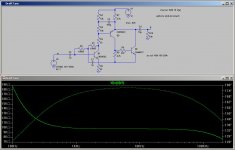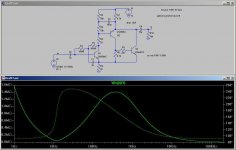Just as a curiosity I have posted a high input impedance BJT preamplifer circuit here: Dual Bootstrap Preamplifier
If only people would go back to using crystal microphones it would be useful! Actually I do have an application for it anyway. It uses 2 transistors and has 3 feedback loops. I am certainly interested in any improvements but I don't want to use JFets or whatever.
If only people would go back to using crystal microphones it would be useful! Actually I do have an application for it anyway. It uses 2 transistors and has 3 feedback loops. I am certainly interested in any improvements but I don't want to use JFets or whatever.
I am certainly interested in any improvements but I don't want to use JFets or whatever.
Why?
I was going to suggest using matched EPAD mosfets from ALD (Advanced Linear Design). 1pf of CISS.
Look for a high Hfe BJT, at least this way you can 'see' a fairly high Z from looking into the base. I use a high imput Z in my amp, ~150K, but it uses a specific J-fet as the input device...guess that idear is out.

Does cascoding of the input BJT reduce the input capacitance? Or does it reduce the effect of varying input capacitance?
I'm wondering what effect this could have on HF input impedance.
I'm wondering what effect this could have on HF input impedance.
Does cascoding of the input BJT reduce the input capacitance? Or does it reduce the effect of varying input capacitance?
I'm wondering what effect this could have on HF input impedance.
Reducing the effect of varying junction capacitances for sure but also preventing it from operating close to Vce saturation. With 10V or more Vce, Ccb is significantly less than maximum. However, it seems to me, BJTs are less suitable for high input Z inputs. With 100nf input cap, if this is for full range audio low frequency Z is going to be very high, or else shifted in phase. If it is for a peizo mic or something a FET is most likely needed...a very small one.🙂
Use the FET to drive the BJT.

- Status
- Not open for further replies.

